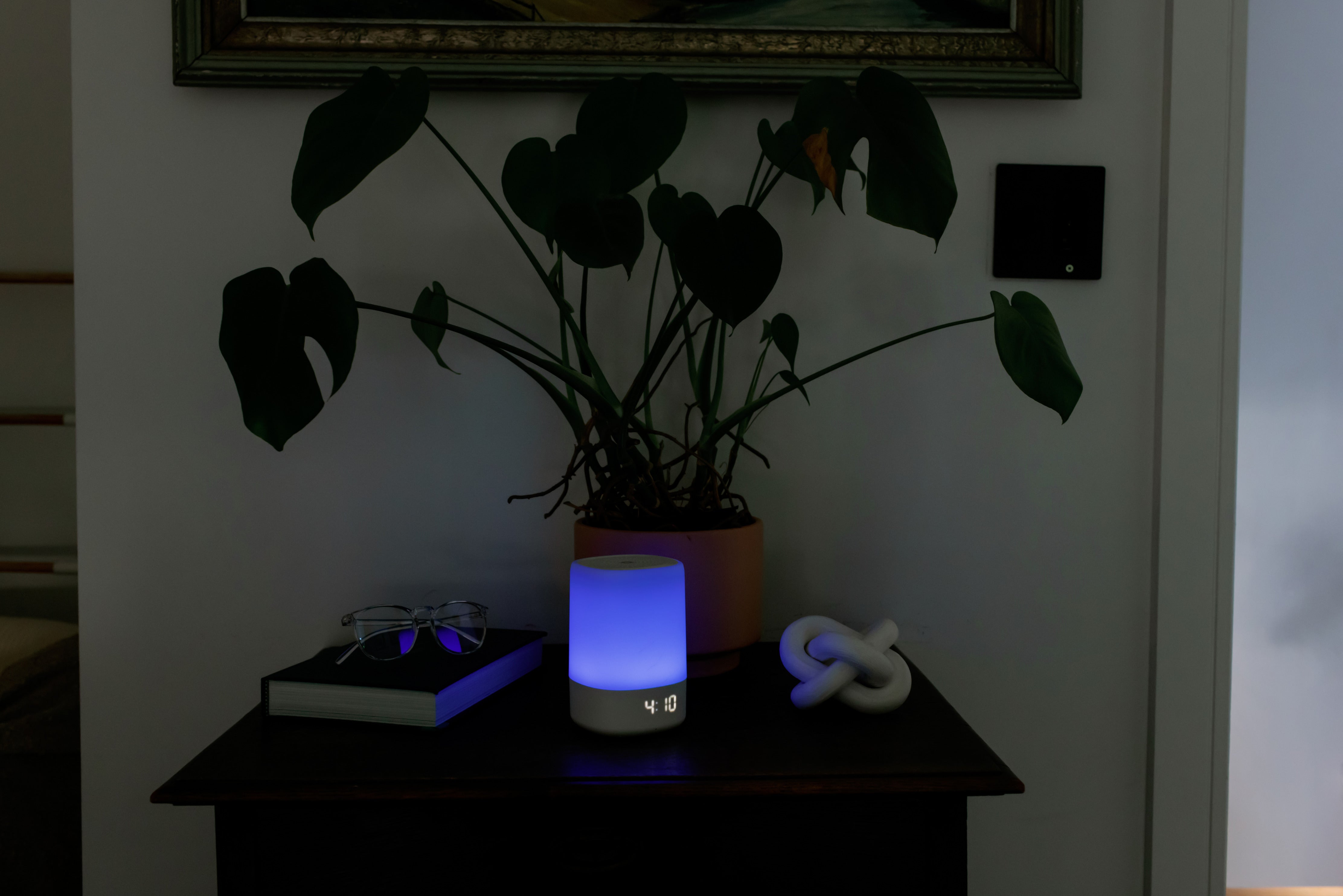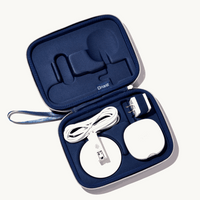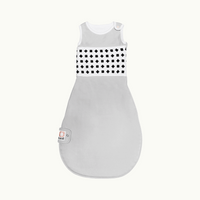When you’ve got young kids, bedtime is a sacred thing, for you and your littles. A good night’s sleep makes everyone function better and be their happier, more patient, more joyful selves the next day. (I’m not crying over the spilled snack cup of strawberries, you are!) And a regular bedtime routine plays a big role in helping your child settle down for the night and fall—and stay—asleep peacefully.
The 3 Most Important Steps
What your routine involves is something you and your family get to decide. There’s no one right or wrong approach, says Dr. Natalie Barnett, Vice President of Clinical Research at Nanit Lab. Instead, it’s about filling your child’s wind-down time with things that you love doing together most. Here, Dr. Barnett offers three general guidelines as you map out your nightly schedule to keep it as easy and stress-free as possible:
- Do things you like to do. A massage for Baby with lavender-scented lotion? A bubble bath? If you both enjoy it - Brilliant! If your baby is more like a screaming, slippery slug, then maybe skip it! Above all, this should be a time of day that you and your little one look forward to, so fill it with activities everyone likes. Ask yourself: Is this something I enjoy? Does my baby enjoy it? And remember, your bedtime routine is also a regular part of the day, like sitting down to breakfast or walking the dog, so don’t overthink it or make yourself anxious that everything has to be Just So.
- Plan a routine that can be consistent. As your routine starts to take shape, it’s also important to consider: Can someone else easily do this for me? This is key for times when a babysitter or another caregiver will be putting your child to bed. (Hello, Date Night!) The simpler your bedtime routine is to replicate, the simpler it will be for you to share the duties and get a break.
- Include a Sleep Mantra. A Sleep Mantra is a simple phrase to say at bedtime before you leave your child’s room, a gentle, loving cue that the time to sleep has come. For example: “Goodnight, I love you, see you in the morning.” But anything goes, so have fun and feel free to get creative. It could become a part of your family’s history for years to come! "For my family, my 3rd son (now 12 years old) couldn’t pronounce ‘tomorrow’ when he was two and would always say ‘see you tomowo’ when we put him to bed. Ten years later, we all say ‘see you tomowo’ to each other when anyone is headed off to bed!”
Plan Your Routine
Your nighttime routine might look a little different depending on your child’s age. So to get you thinking, here are ideas from length of routine, to activities, to the setting of your kiddo’s sleep environment. If the idea works for you, include it. If not, no worries—you’ll find your own magic formula. Now, search out the correct age range and dream on!
Newborn
With your little one, it’s best to keep the bedtime routine short and attainable. You really only need 2-3 things that are easy to replicate each night.
Mood: Indicate to your baby that it’s time for bed with dimmed lights and calming music
Wind-down activities:
Pick a few steps that you enjoy, these could include:
- Change diaper and get into PJs.
- Feed.
- Give your baby a massage or read a short book.
Bedtime activities:
- Turn off lights so the room is dark.
- Turn on white noise machine. Studies have shown that babies who sleep with white noise sleep an average of two hours longer stretches than babies with no white noise.
- Say your Sleep Mantra.
3 months to 1 year old
Length of routine: 30 minutes
Mood: Soft light, calming sounds or music. The idea is to set this time apart from when it’s time to actually go to sleep, so keep lights low but the room shouldn’t be entirely dark.
Wind-down activities
Before bed, you want to calm your child’s energy so they’ll be more ready for sleep. This time might include:
- Change diaper and get into PJs.
- Feed. At this age, parents can start to encourage babies to fall asleep by themselves in the crib at the beginning of the night. If a baby is dependent on something they don’t always have, like a nursing mom or a bottle, explains Dr. Barnett, it’s much harder for them to get themselves back to sleep after a middle-of-the-night wake up. So learning to be an independent sleeper is a valuable skill. If you feel comfortable with the idea, try to keep your baby awake during this before-bed feed. Avoid rocking them during feeding. And you may want to nurse or give the bottle before diapers and PJs, so your child has a chance to perk up again (at least a bit).
- Read a short book.
Bedtime activities
These activities deliver the message, “It’s time to sleep.” They can include:
- Turn off lights so the room is dark.
- Turn on white noise machine.
- Say your Sleep Mantra.

1 to 2 years old
Length of routine: 30-40 minutes
Mood: Soft light (not entirely dark), calming music or sound
Wind-down activities:- A bath. Add bubbles, bath toys, whatever adds up to fun for you and your kiddo. Keep a towel close by so your little one doesn’t get too cold. (Cold can wake them right up again!)
- Change diaper, get into PJs.
- Bedtime snack. At this age, your child may be transitioning to a sippy or straw cup, says Nanit Lab’s Dr. Natalie Barnett, or they may not need milk before bed if they’re eating three solid meals a day. So do what works best for your little one.
- Read a book. This is the age where books are likely to start to be a bigger part of the routine. Let your kiddo pick a story or three; put a selection in a basket for them to choose from. This can be a fun time to work on animal sounds or identifying different colors or words.
Bedtime activities:
- Turn off lights so the room is dark.
- Turn on white noise machine.
- Say your Sleep Mantra.
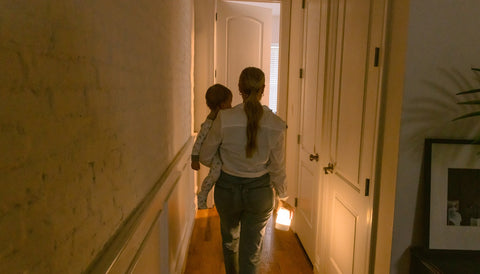
2 years and older
Length of routine: 30 minutes. Toddlers love to push limits (“One more hug!” “One more book!” “One more sip of water!”), so the bedtime routine is a perfect place to practice setting boundaries, say the experts at Nanit Lab.
Mood: Soft lighting (not dark), calming music or sounds
Wind-down activities:
- A bath. Be careful not to let the bath go on forever. (Hold fast to those boundaries!) The Nanit Lab recommends 10 minutes as a good bath time goal.
- Change diaper/pull-up, change into PJs. If your child is showing signs of wanting independence, they might feel empowered by getting to choose their PJs. Keep the decision from being overwhelming by limiting the options: “Blue ones or red?” Let them weigh in on other bedtime elements like selecting the music.
- Play a calm game or read books. At this age, your child might like to incorporate a mellow activity into their nighttime routine: a memory card game, a puzzle, drawing or coloring. It’s also another way to let kids have some autonomy.
Bedtime activities:
- Turn off lights.
- Turn on night light. Some children may start to be afraid of the dark around this age, so using a friendly night light might help them through it..
- Turn on white noise.
- Say your Sleep Mantra.
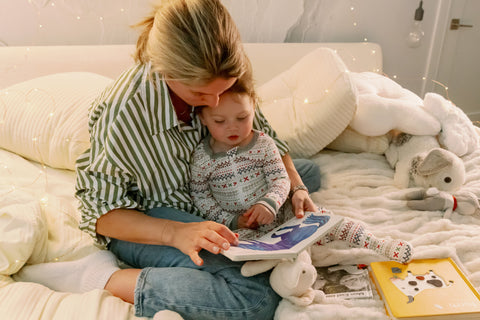
Key Takeaway
Remember: The bedtime routine that feels the best to you and your little one is…the best routine! Period! It may take a while to figure out your ideal rhythms together, and, as Baby gets bigger, you’ll add in some steps and take away others. But at any age, as long as you keep these three main guidelines in mind—fill your routine with activities you and your child enjoy, your routine is something you can do consistently (and others can do for you), and you have a Sleep Mantra—you’ll be well on your way to a good night’s sleep. Sweet dreams!





























